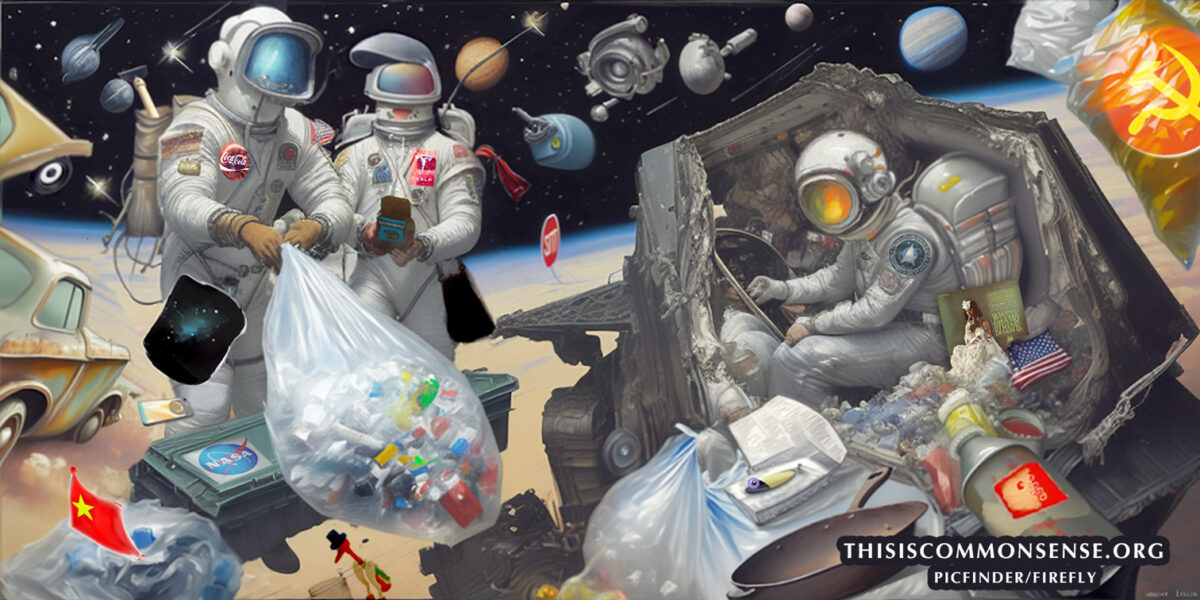A Space.com news story indicates a big problem and a new role for government — or industry.
“The Infra-Red Calibration Balloon (S73-7) satellite started its journey into the great unknown after launching on April 10, 1974 through the United States Air Force’s Space Test Program,” writes Meredith Garofalo. “While in orbit, the original plan was for S73-7 to inflate and take on the role as a calibration target for remote sensing equipment. After this failed to be achieved during deployment, the satellite faded away into the abyss and joined the graveyard of unwanted space junk until it was rediscovered
It’s a complicated story; the satellite never really worked properly. Which raises the space junk problem.
The biggest polluter is governments. Space agencies. And the corporations contracting to put up satellites. And the military that puts stuff up we know
“[A]s more and more satellites head into space,” explains Garofalo, “the task will become even greater to know what exactly is out there and what threats that
When Trump boasted of creating the Space Force in 2019, a lot of people scoffed. I didn’t.*Somebody’s got to do the dirty work, and it does look like Space Force personnel see an important role to be filled, that of garbage men in orbital space. Since the more than 20,000 objects in orbit — and their associated random debris — were put there by governments, maybe governments should clean it up.
The future of space industry could be hampered, should the problem continue to grow — though, in the end, it may be industry that will take over the task. After all, space litter’s more dangerous than most
This is Common Sense. I’m Paul Jacob.
* Also, in no small part, because ceding outer space to China and Russia seems like a bad idea.
Illustration created with PicFinder and Firefly
—
See all recent commentary
(simplified and organized)

1 reply on “Junk Force”
Currently, there are 35,150 tracked objects in orbit, and only about 25 per cent are working satellites.Objects in space travel at speeds over 25,000 km/hr, making any collision potentially catastrophic. Projections estimate more than 100,000 new spacecraft will be launched by 2030, compared to the 8,000 currently in orbit. Scientific models estimate the total number of space debris objects in Earth orbit to be in the order of:
• 29,000 – for sizes larger than 10 cm
• 670,000 – for sizes larger than 1 cm
• More than 170 million – for sizes larger than 1 mm.
A 1 millimeter sized collision is enough to totally shut down an entire operating system on a spacecraft. A 1 cm diameter collision is enough to destroy an entire satellite or spacecraft. It is also too small to be adequately tracked.
Once there is a critical density of objects in orbit around Earth, one collision can set off a chain reaction, causing our orbit to become so dense with shrapnel that it becomes unusable. This is called the Kessler Syndrome, which refers to a sufficient density of debris that an orbit is unsafe and unusable until the debris falls out of orbit. This would likely be for multiple decades, since out ability to clean debris from an orbit of millions of square miles in space is extremely limited, essentially non-existent. Means that whatever was to operate in that orbit can no longer do so. If that happens to be cell service or GPS then it is gone for generations. Gone for everybody, So a hostile military power could cripple the civilized world and permanently handicap their own future potential at the same time. For some, that is a reasonable tradeoff.